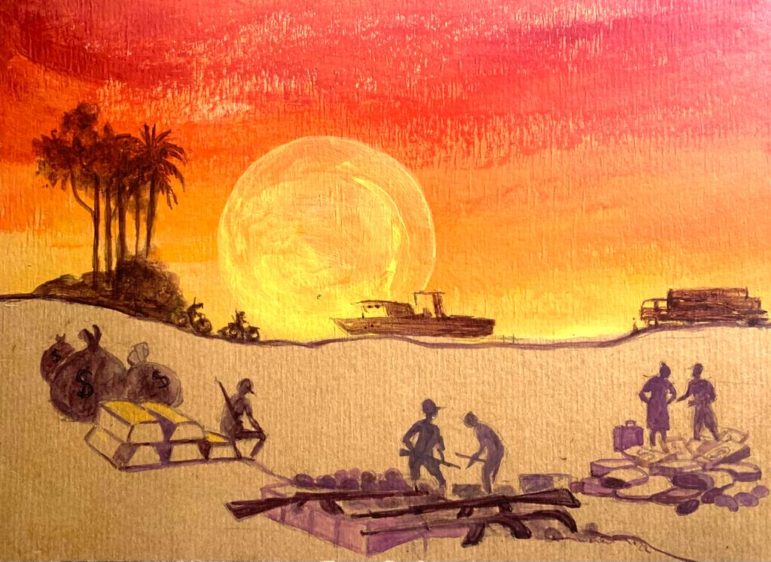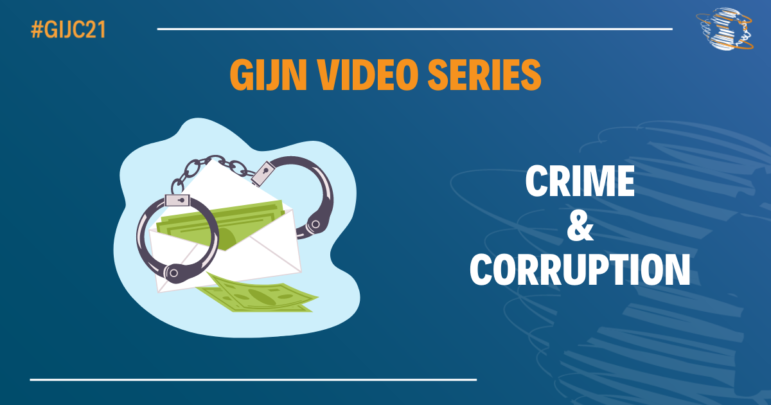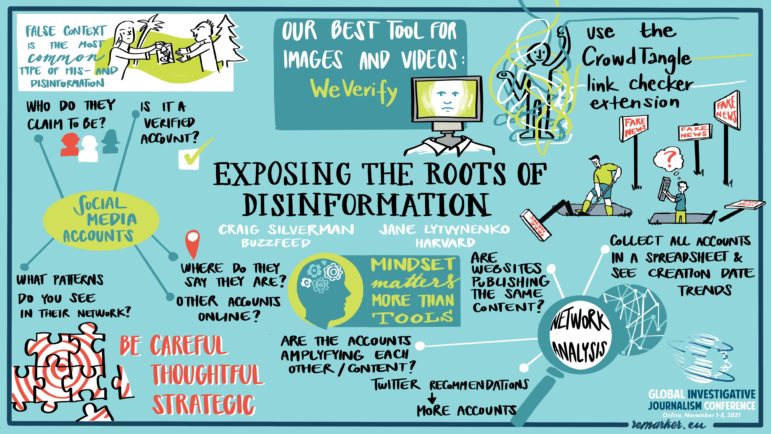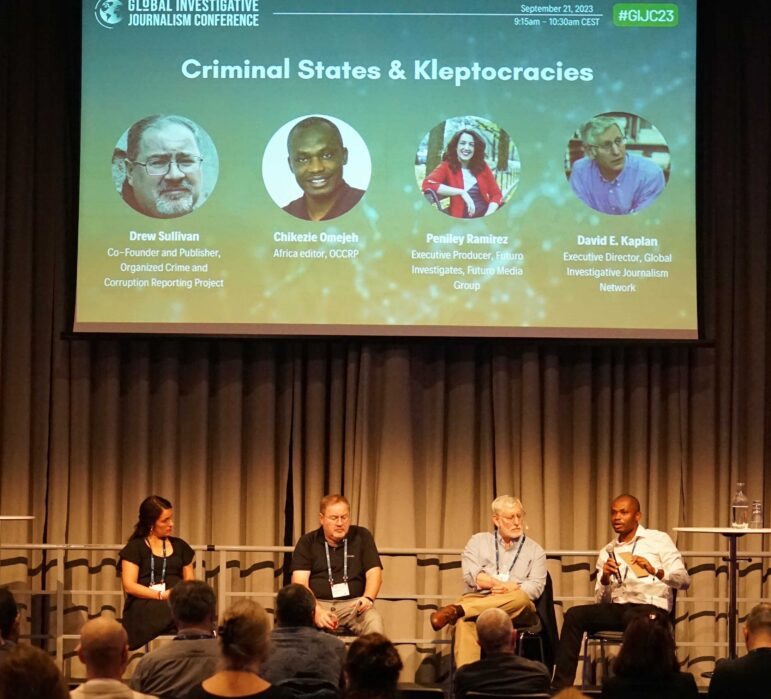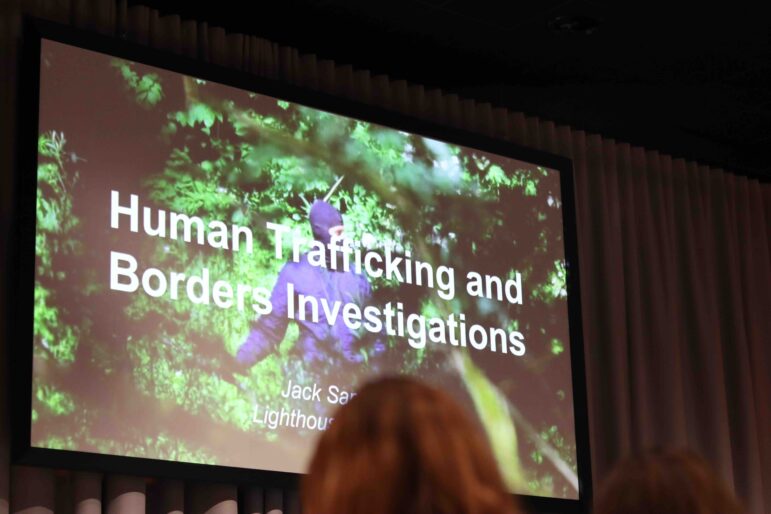

Illustration: Ann Kiernan for GIJN
Investigating Organized Crime: A GIJN Guide
Read this article in
A transnational clothing brand staffing its factories with slave labor. An 11th-century statue stolen from a temple, trafficked overseas, and sold to a museum for millions of dollars. A gang hacking ATMs to steal credit card details and withdraw cash from tourist accounts. A drug-related massacre, and hundreds of people missing as a result. These are just a few of the organized crime stories covered in recent years by investigative journalists around the world.
Our new Reporter’s Guide to Investigating Organized Crime joins more than 100 guides for journalists in the GIJN Resource Center.
Estimates vary, but organized crime is thought to be a trillion-dollar business. One United Nations study put its annual revenues at close to 7% of global merchandise exports. Like a shadow government, it collects its own taxes and enforces its own rules. It affects economic development, social progress, the status of women, and the degradation of our environment. In too many countries, it has replaced civil administration with government-by-theft. For business, it tilts the playing field toward the corrupt and violent.
Today’s crime syndicates are multinational and enterprising. They exist almost everywhere, and they have taken advantage of globalization, modern technology, and weak enforcement. Police — largely bound by national borders — are being left behind as today’s crime bosses move money, people, and contraband around the globe with few hindrances. Too often, it is left to investigative reporters to ask the tough questions, put the pieces together, and make sense of the crimes that are remaking our world.
We asked leading crime reporters to offer their hard-won advice about how to tackle these complex and dangerous topics.
With this in mind, we at GIJN are pleased to offer this Reporter’s Guide to Investigating Organized Crime. We asked leading crime reporters (and one professor) to offer their hard-won advice about how to tackle these complex and dangerous topics. We’ve chosen nine key areas: criminal finance, narcotics, arms trade, environmental crime, forced disappearances, cybercrime, mafia states, human trafficking, and art and antiquities.
Our list is not exhaustive. There is much to investigate in the worlds of counterfeiting, piracy, black market fishing, tobacco smuggling, and illicit trade, to name but a few more areas of criminal enterprise. The world’s great crime syndicates — Italy’s Mafia and ‘Ndrangheta, Japan’s Yakuza, Latin America’s drug cartels, Chinese triads, the Russian mob, and more — are also worth a close look. But, for now, we are pleased to offer this guide as a starting point for enterprising reporters worldwide. In each chapter, we discuss the main drivers and players involved, basic sources to guide you, case studies from multiple regions, and tips and tools on how to investigate the issue.
This guide was possible due to the invaluable support of the Global Initiative Against Transnational Organized Crime (GITOC), an independent civil-society organization based in Geneva, dedicated to seeking new and innovative strategies and responses to organized crime. It was produced by GIJN’s Andrea Arzaba (project manager), David Kaplan (executive director), Reed Richardson, Laura Dixon, and Tanya Pampalone (editors). Ann Kiernan provided the illustrations. Special thanks to the rest of the GIJN staff, who helped on translations, production, and more.

